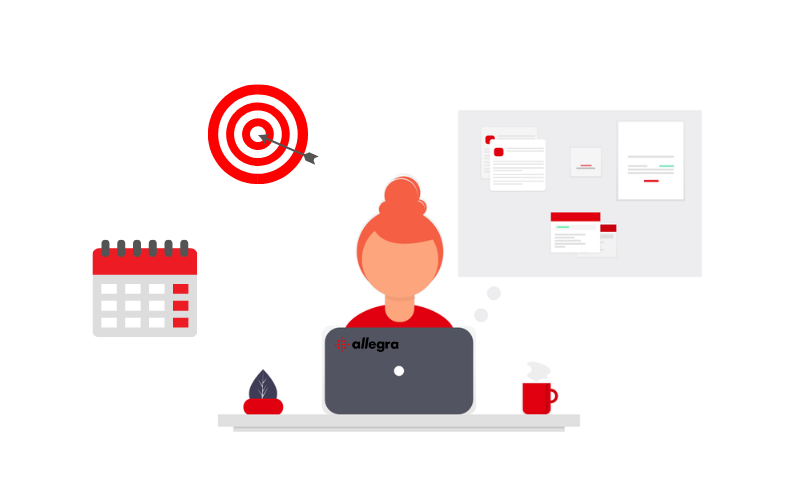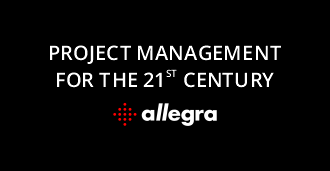PRINCE2 Methodology: What a Project Manager Needs to Know
Overview
The PRINCE2 methodology provides project managers with an efficient framework to help them achieve their project’s objectives.
As a project manager, you’ve most likely heard about PRINCE2 and its impressive results. However, when you have to choose the right method for your team, you need all the details first.
That’s why we’ve gathered everything you need to know in one place. We hope our complete guide to PRINCE2 will help you understand what this framework involves and how to apply it to your projects successfully.
What is PRINCE2 methodology?
PRojects In a Controlled Environments or PRINCE2 is the world’s most widely adopted project management methodology. Most importantly, organizations can use it for any project regardless of type, size, or industry.
Due to its project-based approach, PRINCE2 organizes the project work into manageable and controlled stages. As a result, this framework helps project managers enhance transparency, control, and communication within their teams.
Initially developed in 1989 by the Central Computer and Telecommunications Agency (CCTA) for the UK government, the PRINCE2 method has since entered the public domain and is currently used by project teams in over 150 countries.
The long track record of success of PRINCE2 is based on its 7 principles (why), processes (how), and themes (what). These elements make it easy for project managers to deliver successful projects every time.
The 7 principles of the PRINCE2 methodology
The core principles of PRINCE2 define the best practices that project stakeholders must follow. Therefore, you must include them in every project you undertake.
-
Projects must have continued business justification.
Each project needs to have a clear business purpose and practical benefits that outweigh the estimated costs and potential risks.
-
The project team has to learn from experience.
Team members must seek and document lessons learned in previous project stages and use them for future work.
-
Roles and responsibilities must be clearly defined.
Everyone involved in a project has to know from the start what is expected of them and what they can expect from others.
-
Work needs to be divided into manageable stages.
The project manager breaks the work down into phases separated by periodic reviews. During these review phases, the project manager and the board assess the progress and register any lessons learned in the current stage before going to the next step.
-
The project board should manage by exception.
When the project is on track and everything runs well, the project board’s intervention is limited. On the other hand, when issues that affect project requirements (time, cost, scope, etc.) appear, the project manager will ask for the board’s guidance. This situation represents an exception.
-
Projects should focus on the quality of the products delivered.
Before any work starts, the project manager needs to create a detailed product description that sets clear quality criteria. These guidelines impact all project stages and help deliver the required products.
-
The project manager should tailor the approach to the needs of each project.
Tailoring PRINCE2 to the size, complexity, environment, and requirements of a project leads to better results than following the method blindly.
The 7 processes of the PRINCE2 methodology
 The PRINCE2 framework is made up of 7 processes. Each process involves a set of activities that allows managers to organize, manage and deliver a project on time and on budget.
The PRINCE2 framework is made up of 7 processes. Each process involves a set of activities that allows managers to organize, manage and deliver a project on time and on budget.
As mentioned in the section above, you should tailor these processes for each project. This way, the work will run as smoothly and efficiently as possible.
-
Starting up a Project
This is the stage where the organization determines the project’s feasibility.
First, someone submits for approval a project mandate that briefly describes the project’s business justification.
If the project board approves the mandate, the project manager creates a more detailed project brief. This document includes the business case, achievable goals, resources, deliverables, and the implementation process.
-
Initiating a Project
The Initiating a Project process aims to determine the activities required to deliver the products. In other words, it sets the project’s foundation so that every stakeholder understands its end goal.
For this, the project manager creates a project plan covering 6 essential performance targets—time, cost, quality, scope, risk, and benefits. This plan and the Project Initiation Documentation serve as baseline documents that the project board and the project manager use to evaluate work progress and deal with potential roadblocks.
Once the project board approves the plan and the other initiation documents, work can begin.
-
Directing a Project
This process enables the project board to be accountable for the project through the decisions they make. Moreover, the board provides direction and control and exercises its authority at crucial moments in a project’s lifetime.
To clarify, the activities involved in the Directing a Project process include authorizing the initiation of the project, the project itself, a project stage, and the project’s closure.
-
Controlling a Stage
This process’s main purpose is for the project manager to assign the tasks or ‘work packages’ to the project team and team manager. The project manager then monitors the work throughout each stage and checks the quality of completed work.
Also, the project manager has to report the progress to the project board and review the current stage status in relation to the stage plan. If any delays or issues arise, they will make the necessary changes so that the project stays on the right track.
This sequence of activities repeats for every stage of the project until the Closing a Project process starts.
-
Managing Product Delivery
This process aims to ensure that the project progresses according to plan and the products delivered meet previously set expectations.
In this case, the team manager has to create a plan that facilitates the creation and delivery of products included in the work packages assigned by the project manager.
Additionally, the team manager needs to review the quality of those deliverables, obtain approval from the board, and deliver the completed work packages to the project manager.
-
Managing Stage Boundaries
This process allows the project board and manager to review each stage of the project in terms of quality and adherence to the original plan. The collected information helps the project board decide if they should approve the next stage or shut the project down completely.
Meanwhile, the project manager has to document the lessons learned during the current stage to improve work in future stages. They are also responsible for updating the project plan and business case and planning for the next phase.
-
Closing a Project
The project should have a clear end. This means that the team achieves all the objectives and delivers the products to the satisfied client.
The project manager is responsible for all the activities involved in closing a project. This includes handing over the products, reviewing the overall performance, and requesting the project board to close the project.
The 7 themes of the PRINCE2 methodology
The PRINCE2 themes reflect how the project management team applies the principles and addresses them throughout the project to keep everything on track. Generally speaking, these themes represent knowledge areas that provide you with the necessary information on specific project management topics.
Again, you should always adjust the themes to suit the requirements of the project you’re managing.
-
Business case
The business case contains the information that determines if a project is viable, achievable, and a worthy investment. According to PRINCE2, the project manager creates this document, maintains and refers to it at the end of every project stage.
-
Organization
The project manager needs to define and record the roles and responsibilities of the members within an organization who participate in a project.
-
Quality
This theme helps define and implement a quality control system that ensures that products meet requirements and are fit to be used as intended.
-
Plans
The information included in this theme highlights the fact that every project needs a plan. After all, failing to plan is planning to fail. There are three levels of planning in PRINCE2: the project plan (used by the project board), the stage plan (used by the project manager), and the team plan (used by the team manager).
-
Risk
The purpose of this theme is to offer the best approach to uncover, assess and control potential risks during the lifecycle of a project.
-
Change
This theme refers to managing change requests and dealing with issues that might appear during the project. Simply put, the project manager needs to come up with the proper way to get changes agreed upon and approved before implementing them.
-
Progress
Tracking a project’s progress is essential for monitoring project status compared to the plan, reviewing project viability, and controlling any deviations.
What are the key roles in PRINCE2 project management?
 There are three leading roles in the PRINCE2 methodology: the project manager, the team manager, and the project board. Also, the project board includes the executive, the senior user, and the senior supplier.
There are three leading roles in the PRINCE2 methodology: the project manager, the team manager, and the project board. Also, the project board includes the executive, the senior user, and the senior supplier.
In some cases, there are other secondary supporting roles involved, such as project assurance and project support.
- The executive: the person who supports the business case and justification for the project and appoints the project management team, including the senior user, senior supplier, and the project manager
- The project manager: the person who plans, organizes, and controls the project on behalf of the project board, delegates tasks, and manages the project on a day-to-day basis
- The senior user: as the representative of the end-users directly impacted by the products or services delivered at the end of a project, they specify and protect user needs
- The senior supplier: the product specialists that provide the required expertise to ensure that the project uses the right resources and that the products delivered meet quality requirements
- The team manager: the leader of the project team who reports to the project manager and makes sure that the products assigned in the work packages are ready on time
- Project assurance: the team of people (sometimes the project board assumes this role) that checks if the project is on tracks in terms of business assurance, user assurance, and supplier assurance
- Project support: the team of people who provide assistance and advice on project management tools and configuration management, and also administrative services to the project manager in the case of larger projects
Why you should use the PRINCE2 method for your projects
The key benefits of the PRINCE2 methodology include:
- Allows you to create flexible frameworks that suit the needs of projects of various sizes and complexity levels.
- Ensures that project stakeholders get involved at the right time and place during each project stage.
- Assures you that the project has a continued business justification.
- Enhances the communication between the project team and other key stakeholders.
- Helps you uncover and manage potential obstacles that you might encounter during a project.
- Includes an efficient process for capturing lessons learned so that you can use that knowledge for future projects.
- Has a well-established system that allows you to identify and manage project deviations from the original plan.
Finally, the most significant advantage of implementing PRINCE2 in your organization is that it enables you to save time and money while effortlessly delivering successful projects.
PRINCE2 project management certification
To get PRINCE2 certified, you first need to take part in a training course with an accredited training organization, either in a virtual, online, or classroom format. After that, you have to take an exam with different difficulty levels depending on the certification you choose.
There are 4 levels of certification for PRINCE2:
-
PRINCE2 2017 Foundation
This level provides you with the basic knowledge and understanding of PRINCE2 required to work efficiently within a project management team using this method.
-
PRINCE2 2017 Practitioner
The PRINCE2 Practitioner certification confirms that you can implement and tailor the PRINCE2 method to address the needs of specific project scenarios.
-
PRINCE2 Agile Foundation
This certification level provides you with the basic knowledge of PRINCE2 and popular Agile techniques required to work within a project management team that combines them.
-
PRINCE2 Agile Practitioner
The PRINCE2 Agile certification enables you to tailor the PRINCE2 principles, processes, and themes to a real-work project in an agile environment.
Want to learn more about popular project management methodologies?
Check out our article on project management methods to find out more about the fundamental principles and processes behind Scrum, Kanban, Agile, and others.




